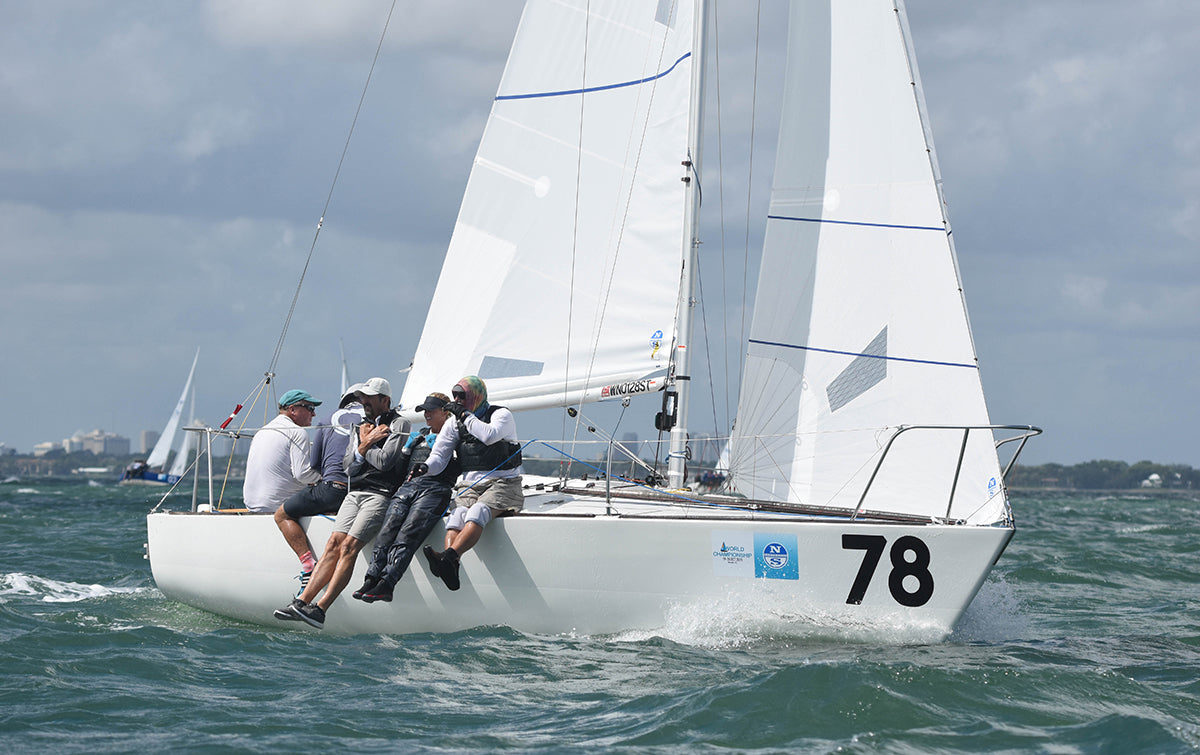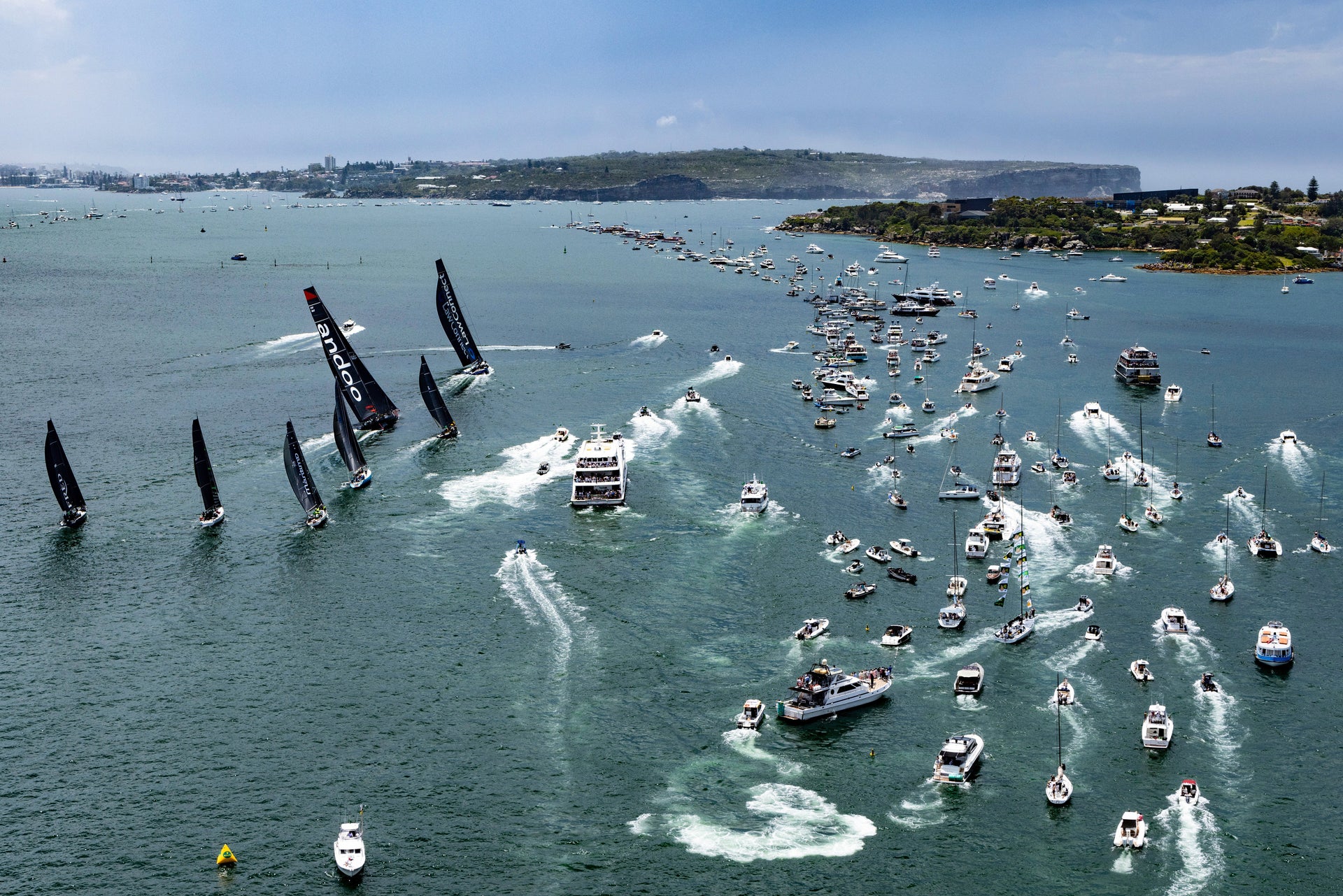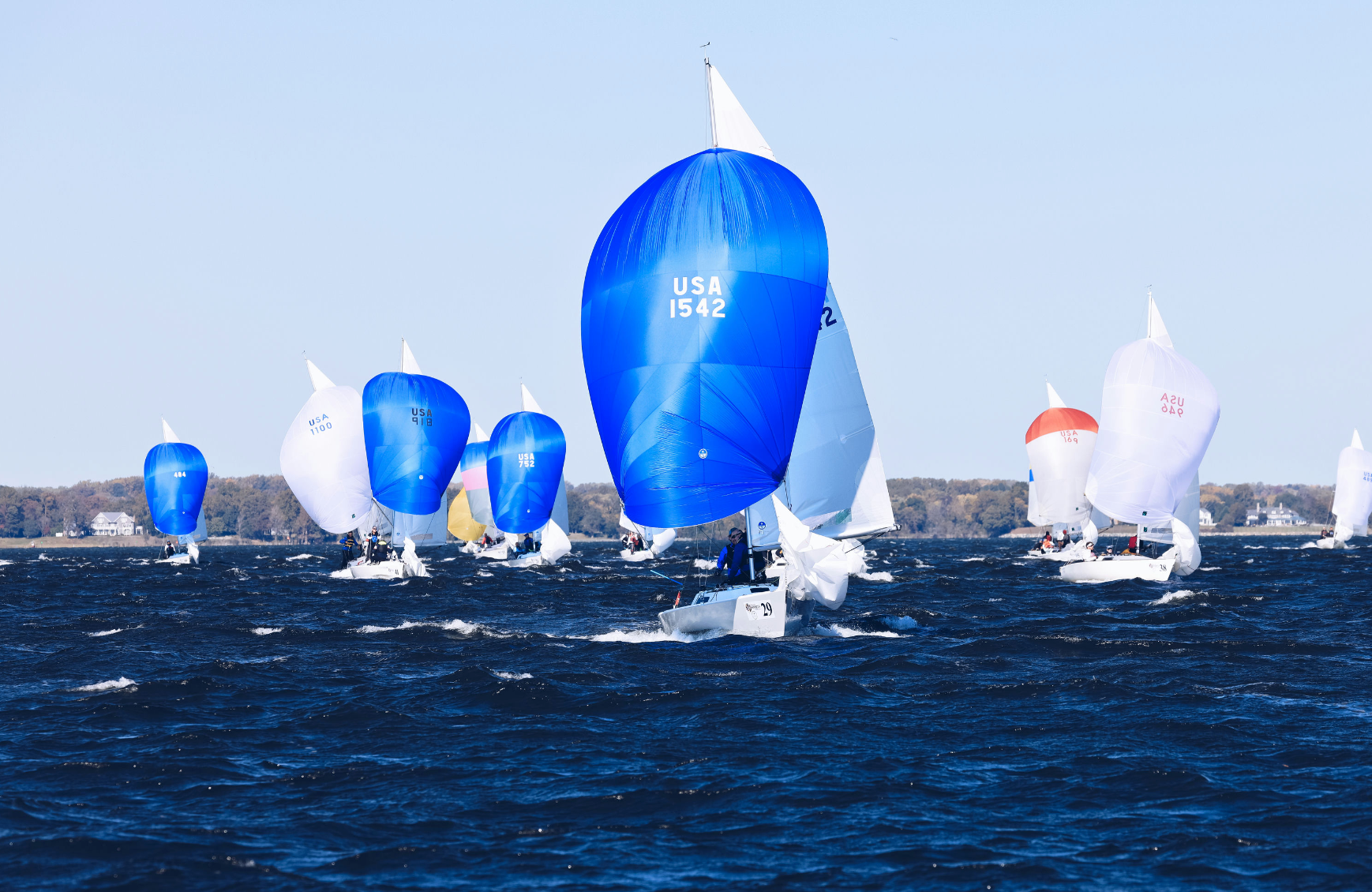WINNER’S DEBRIEF: KEITH WHITTEMORE
WINNER’S DEBRIEF: KEITH WHITTEMORE
Skipper Interview With North Expert Mike Ingham

North Sails Expert Mike Ingham spoke with the 2019 J/24 World Champion skipper about what it took to win. Team Furio had an impressive win at the J/24 Worlds. The class is going strong, and with 79 boats from 20 countries, they averaged 5.5 points!
I trained with Keith’s team leading up to the Worlds, and we were both pretty quick, so a few days after his win I called to ask him how they posted such a consistently impressive scoreline over conditions that ranged from go-below light air to sailing with the small jib. He called out three key factors: team (the right balance of skill and attitude); preparation (a well prepared boat, and a solid training plan); and speed (he is a fanatic about sails, rig tune, and trim).
Winning Team
Keith spoke highly of his team’s skills and attitude, beginning with tactician Brian Thomas. “Brian and I have been sailing together for 40 years. We get along great, and I totally trust him.” Trimmer Willem van Waay is a newer addition to the team, and Keith says he brought some big regatta winning experience and a great attitude. Shelby Milne is on mast. “She has been with the team for two years and is great at her job, reliable, hardworking, and a ton of fun.” Mark Rodgers mans the bow; “He is damn fun to be with, 100% reliable up there, and salt of the earth.”
Winning Speed
Here’s what Team Furio used for sails:
Keith has high confidence in the consistency of materials and workmanship of his North sails. “Perfect out of the bag—every time.” Curious why he chose the San Diego genoa instead of the Newport model (DX-7TT), I asked him for his thoughts. He feels there is no speed difference between the two genoas and advises picking one and getting to know it well; “don’t switch between the two.” One of the models has won every single Worlds since 2013 when the designs were refined, so his advice seems sound.
Genoa Details
While training with Keith, we spent a lot of time looking at the genoa. As the driving factor on the J/24, getting it set up and trimmed just right is huge. The San Diego Genoa is a little flatter, so you have to be spot-on powering it up. The Newport is a little fuller, so at the top end you have to focus on getting that power out and make sure not to over-trim.

Keith offered a few additional speed tips:
New Genoa for Major Events
“Unroll a brand new genoa for the first race of the first day of racing. It’s good to break in the main, jib, spin for a day or so, but there is nothing like a nice crisp genny for race one!”
Set Up for the Lulls
“If you tune up with your rig at 24/21 and you are always off on your backstay, wishing you had a bit more power, ease off your rig. Even with a front row start, the wind goes over that picket fence of 80 boats and we start in lighter wind, always—so err on powering up.”
Live Through the Puffs
“In the bigger puffs, or if the wind increases during the race, you need to get good at depowering the boat. The idea of setting up the rig for the lulls is to excel in the lulls (big gains), But that means you have to learn to hang in there for the puffs with a soft rig. Play backstay, cunningham, boom vang, genoa halyard, and pinch as much as you can (less in waves). Last resort is to ease the genny sheet. No matter what, keep the boat mostly flat and the helm balanced.”
Jib Luff Tension
“To help make the genny work from 1 to 20 knots through flat water and waves, be super aggressive with the halyard and jib cunningham. If it is light, sail with scallops between the hanks. But if you make the halyard too loose, the scallops bunch in the middle -that is not good. As the wind increases, the halyard gets tighter and tighter and eventually at the top end it is stretched. The halyard has to be right for the trends, then fine-tune with the jib cunningham.”
Jib Leads
“In flat water, we set the leads to touch-touch“ (when over-trimmed, the genoa touches the chain plate and the spreader simultaneously). “In the chop we moved it forward a hole to round out the bottom and power it up. That may not seem like a lot, but since the lead is so close to the clew, it makes a big difference. When the waves were on the side on one tack and on the bow for the other, we would only power up on one tack.”
Team Furio have been sailing the J/24 for a long time, and they plan to keep it up. They have a 25-boat local fleet in Seattle, and they’ve made friends all over the world. “That is something really special about the class,” Keith points out. “There’s a sense of community and friendship. Of course we want to do well, but really we do this because we sail with people we like to spend time with.”
Congratulations Team Furio!
For more info about the J/24, visit the class page.




























